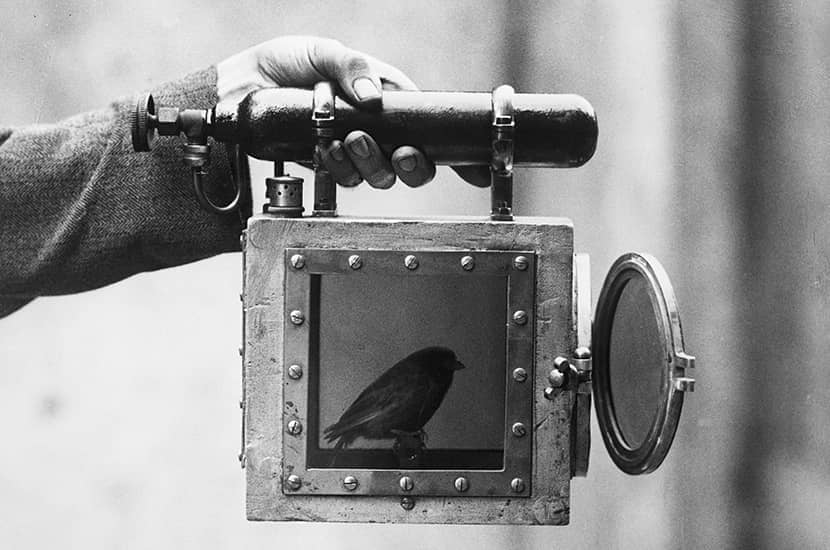Unusually for a book about nature, the species in question, in this lucid story of the relationship between birds and humans, is ours. Why catch six million ibises, attractive water birds with curved beaks, plunge them into vats of liquid resin, wrap them in bandages and bury them in vast cemeteries in Middle Egypt in 650 BC?
When There Were Birds explains that these ibises were offerings to Thoth, god of knowledge and wisdom. Throughout this story, faith, cash and custom drive humans to behave in astonishing ways towards birds. From the early 15th century we were moving canaries to the Swiss Alps and southern Germany, where breeders might raise 50,000 birds a year, which were then transported and sold across the world. In 1871 America alone bought 48,000 as pets.
The late 19th century is a focus of the book, with clergy, scholars and journalists keeping records. The historians Roy and Lesley Adkins group their accounts thematically. Chapters on sickness and magic show us at our most cruel and absurd, burying live cockerels to cure epilepsy and applying the fundaments of pigeons to snake bites. But an evocative chapter, ‘Abundance’, assembles descriptions of a British landscape so vivid you feel you almost remember it. On Hickling Broad in Norfolk we see ‘about an acre and a half’ of coots, with Richard Lubbock, the 19th-century rector of Eccles. Near Ablington in the Cotswolds we watch lapwings with squire Arthur Gibbs:
Now flying in long drawn out lines, now in battalions; bowing here, bowing there. A thousand trained ballet dancers could not have been in better time. It was as if all joined hands, dressed in green and white; for at every turn a thousand white breasts gleamed in the purple sunset.
Carrier pigeons helped Brutus outwit Mark Antony at the Battle of Mutina in 43 BC
In the Thames valley, roosts drew ‘from every point of the compass to their chosen sleeping place a black river of rooks, perhaps half a mile long’, wrote James Cornish, curate.
Population growth, farming techniques and the increase of guns and pesticides combined to extinguish the abundance. Birds have been regarded as vermin from the time of Henry VIII, whose legislators declared war on the crow family, requiring every hamlet of more than ten households to net and kill corvids. We became so good at shooting birds that one of the first Acts of Parliament to protect them was signed in 1869 to defend seabirds. Such was the slaughter around Flamborough Head that fog-bound ships could no longer rely on the cries of kittiwakes to warn them of the cliffs, leading to a rise in wrecks. Saving the birds saved the ships: today we might judge it a holistic piece of legislation, now that we regard birds as key environmental indicators — the canaries in the coal mine we have made of Earth.
In a section on humans and avians working together, those canaries appear again, fainting dutifully at traces of carbon monoxide. Their comrades include the parrots which lived at the top of the Eiffel Tower in 1915 and warned of approaching aircraft by bristling their feathers, and millions of carrier pigeons — first used by the Greeks in the 6th century BC, then helping Brutus outwit Mark Antony at the Battle of Mutina in 43 BC, flying on through storms, gunfire and trained Prussian hawks during the Siege of Paris in 1870, and into the first and second world wars. We gave some of them medals.
As well as buying stuffed birds as ornaments, thanks to a collecting mania which took hold during the 18th century, and their feathers for costume (the Victorians imported 3,988lb of ostrich feathers to London in 1850 alone), we used their quills to write our literature, laws and accounts. Clerks and hack writers were once known as ‘quill-drivers’, though as the Adkinses drily point out, we have quill-driving to thank for Magna Carta, the novels of Austen, the scores of Beethoven and the American Declaration of Independence among other documents.
Amid all the guano-digging, cock-fighting and tongue-slitting (this is how you make a magpie talk, of course) there are inspiring acts of preservation. William Adams, the editor of the Newcastle Weekly Chronicle, launched the Dicky Bird Society for children in 1876. By 1914 it had spread around the world. In order to join, hundreds of thousands of children signed this pledge: ‘I hereby promise to be kind to all living things, to protect them to the utmost of my power, to feed the birds in winter time and never to take or destroy a nest.’
A compassionate quill-driver produces a heartfelt sentence, idealistic children respond and incalculable numbers of birds are saved. Salvation now requires heartfelt legislation and more idealism than it takes to have greater faith in our children than we do in ourselves. There are no dodos in this book. Like us, they could not fly.






Comments